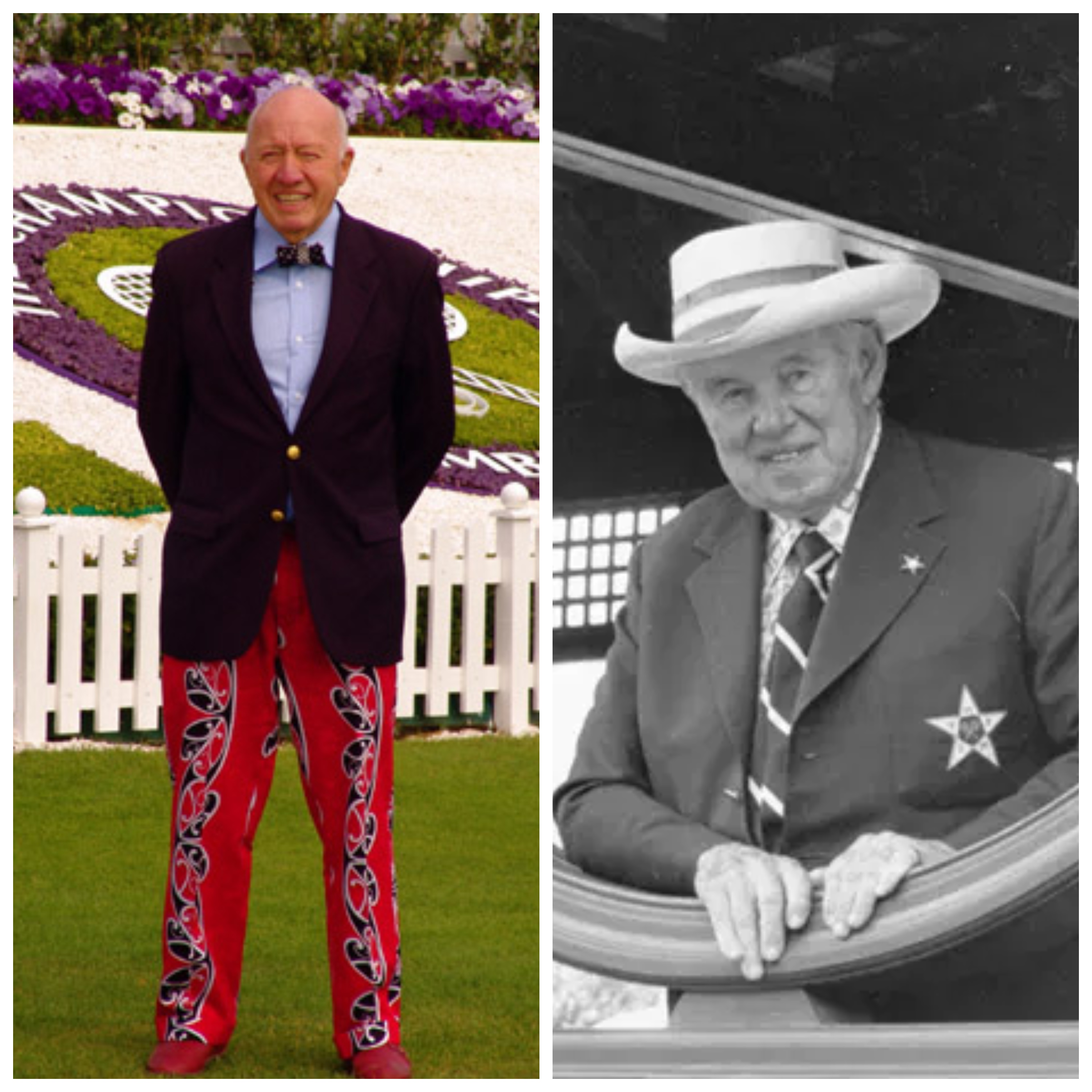By Randy Walker
@TennisPublisher
“It’s a tiebreaker. Not a tiebreak.”
This is one on the gospels of Bud Collins, the late great and one and only Hall of Fame tennis historian, journalist and personality. Bud was one of the great “gate keepers” of the game, playing his part in preserving history and traditions and promoting the game where ever he could.
I could practically hear Bud exclaim “tiebreaker, not tiebreak” in the context of the historic 20-18 decisive match tiebreaker won by Lesia Tsurenko over Ana Bogan in the third round of Wimbledon. I was corrected on numerous occasions by Bud during the many fortunate years I spent with him during my 12-year stint working at press officer for the U.S. Tennis Association and for years after I became his book publisher in 2007.
I emailed Anita Ruthling Klaussen, Bud’s widow and the keeper and protector of all things “Bud” since his 2016 death, to reiterate the use of the term “tiebreaker” and to reconfirm the story of how it was Jimmy Van Alen, the man who actually created the tiebreaker, who wanted it to be called by its correct name of “tiebreaker.”
“At the very beginning, Bud asked Jimmy Van Alen what he wanted to call it because there was confusion. Jimmy said: TIEBREAKER. Period, the end,” wrote Klaussen, preceding her explanation by writing to me “Bud is looking down at you with approval,” which made me smile. “Bud was horrified by the corruption of the word, just as he was of winning a ‘Grand Slam.’ One wins a MAJOR, winning four in a year is a Grand Slam. He came to be OK with the tournaments being referred to as a Grand Slam Tournament, but he still preferred MAJOR Tournament.” (I take a deeper dive in the use of “Major” vs. “Grand Slam” conversation in this video here: https://www.youtube.com/watch?v=6L7CrpyVpLE)
On page 775 of “The Bud Collins History of Tennis” – the tennis encyclopedia the Collins was also famous for – Collins lists the longest tiebreakers of all-time with a 26-24 tiebreaker in men’s doubles at Wimbledon in 1985 being the longest on record, won by Michael Mortensen and Jan Gunnarson over Victor Pecci and John Frawley in their 6-4, 6-4, 3-6, 7-6 (24) first round win.
Even though there is no “official” record of it, there was an incredible 36-34 tiebreaker played in the final round of qualifying at a ITF World Tennis Tour USTA Pro Circuit event in Plantation, Florida in 2013, but the match did not have a chair umpire or scorecard. Read my story about that here http://www.worldtennismagazine.com/archives/8769
Tsurenko and Bogdan’s tiebreaker should be clarified as it was a “match tiebreaker” which is a first-to-10 point tiebreaker as opposed to the first-to-seven-point tiebreaker, which evolved from the original sudden-death nine-point tiebreaker, which was the first-to-five-point tiebreaker with a 4-4 point being a sudden-death point. Tsurenko and Bogdan’s “match tiebreaker” is the longest on record for a women’s match. The longest-ever women’s tiebreaker happened in doubles at the Amelia Island event in 2006 with Bryanne Stewart and Nicole Pratt defeating Rennae Stubbs and Corina Morariu 7-6 (7-5), 7-6 (22-20).
The U.S. Open was the first major tournament to implement tiebreakers at the 1970 tournament. Neil Amdur of the New York Times wrote on July 26, 1970, “In the most revolutionary step in tournament tennis scoring since ‘love’ became synonymous with losers, a sudden-death scoring system will be instituted for all matches in the $160,000 United States Open championships, Sept. 2 through 13, at the West Side Tennis Club in Forest Hills, Queens.” Amdur continued, “A 9‐point tiebreaker, recently approved for experimental use by the International Lawn Tennis Federation, will decide all sets reaching 6‐6. The player who wins 5 of the 9 points in the playoff wins the set or match.”
Later in the Amdur article, under a sub-headline titled “How Tiebreaker Works,” Amdur quotes U.S. Open tournament director Bill Talbert explaining how the 9-point “tiebreaker” works and that Talbert said the tiebreaker should have tremendous impact, artistically and psychologically.”
In 2022, it was announced that all four major tournaments would implement a 10-point match tiebreaker at 6-6 in decisive sets, falling in line with the Australian Open, which had the practice in place since 2019.
So when the score is 6-6 in a set, remember Bud Collins and Jimmy Van Alen and call it by its proper name….a tiebreaker.







